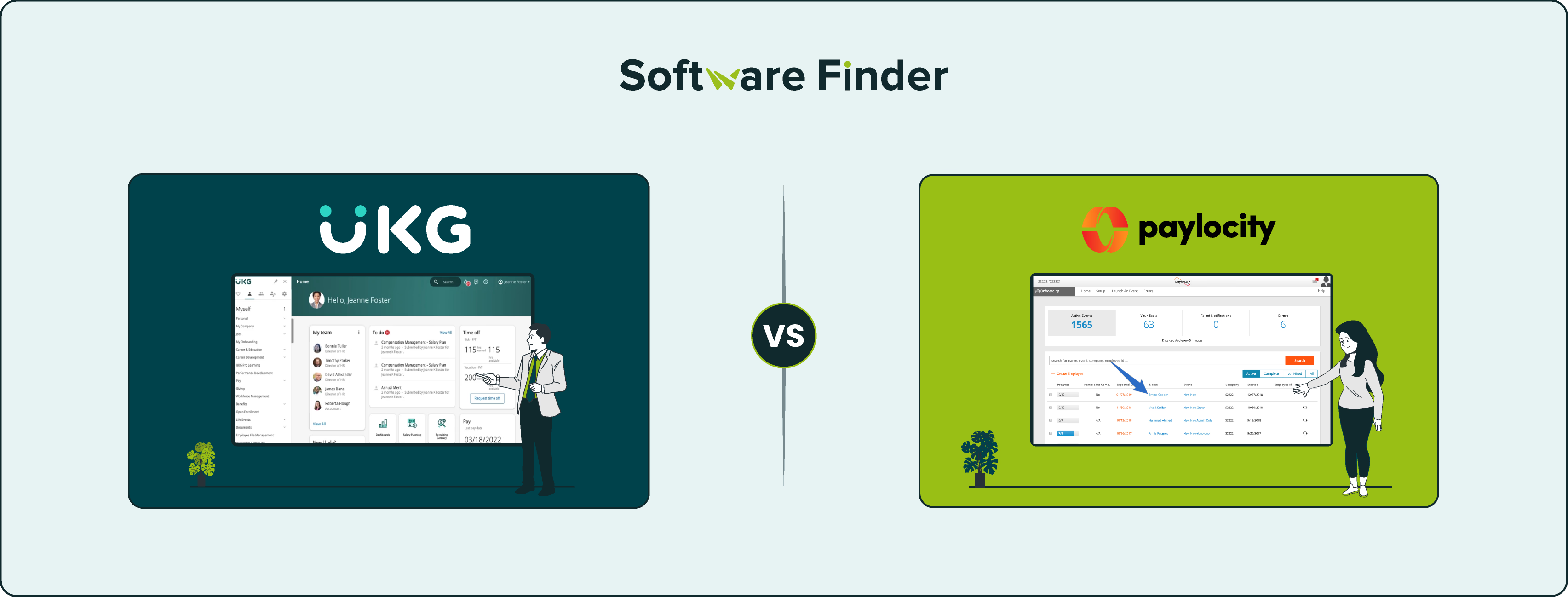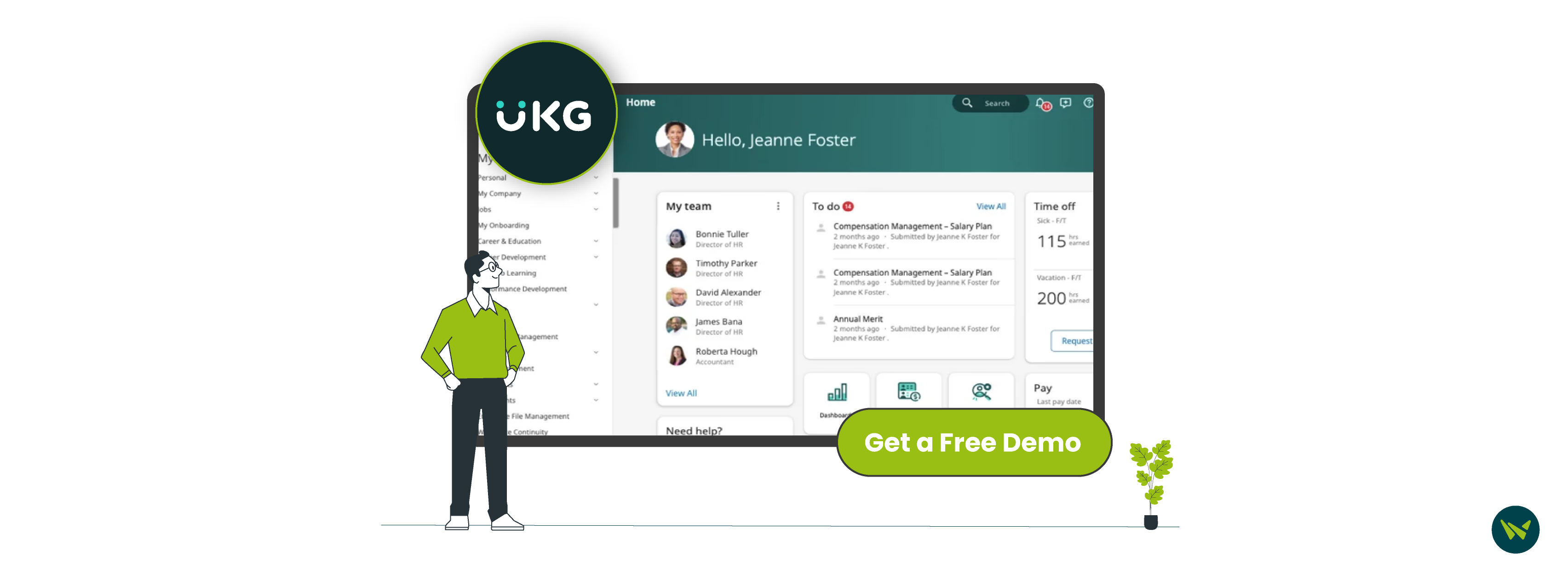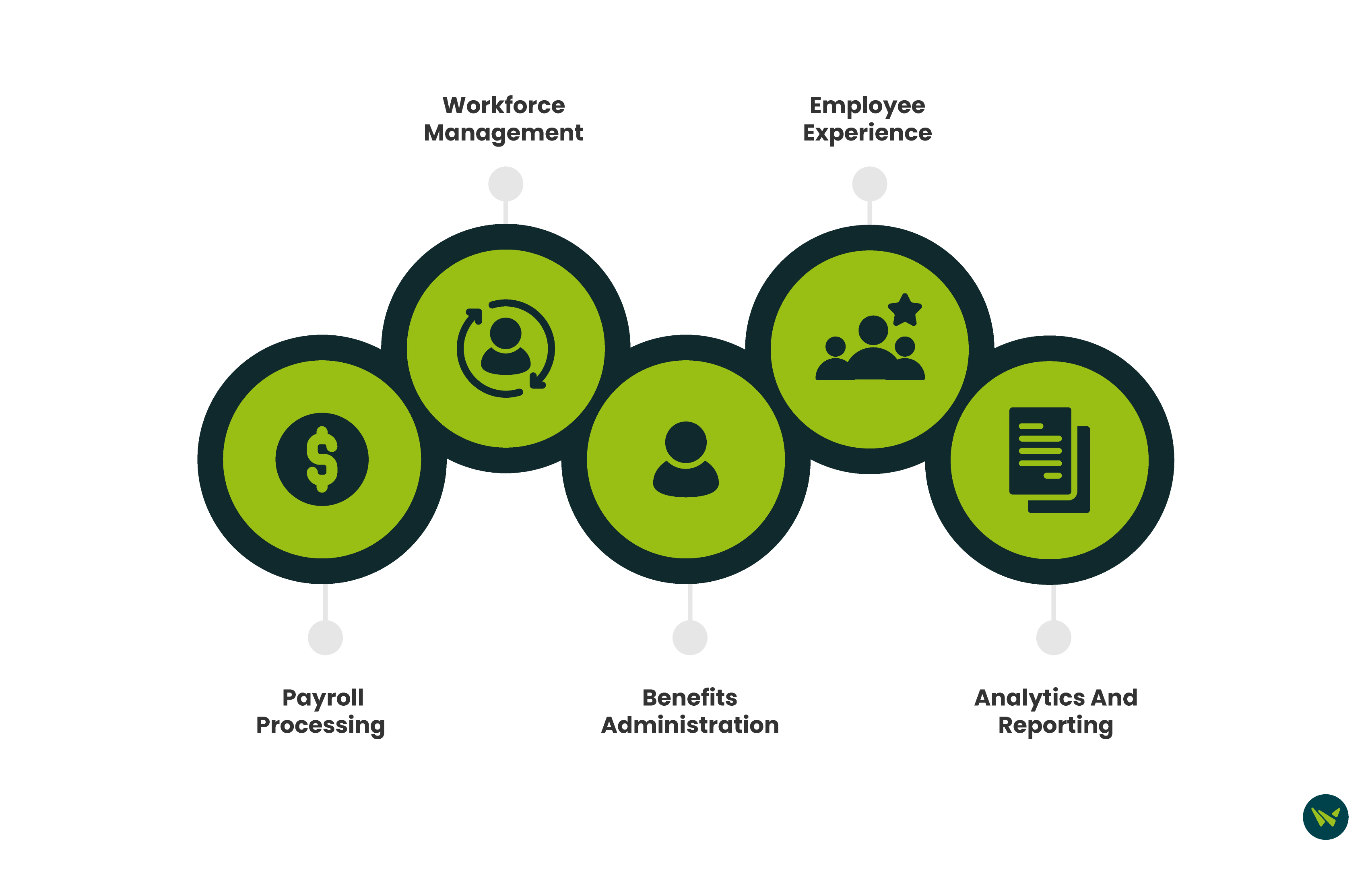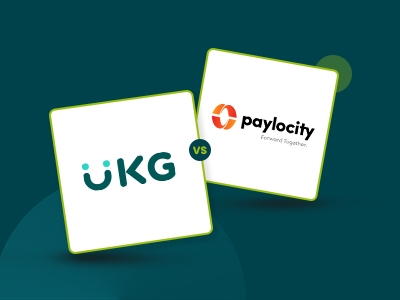
Human resources (HR) software adoption is accelerating as more businesses embrace automation to streamline workforce management and payroll operations. By 2029, the global HR technology market is projected to exceed $39.90 billion, signaling a shift towards intelligent, data-driven solutions.
As companies navigate this transformation, choosing the right HR software is essential for optimizing payroll and leveraging predictive workforce analytics.
Among the leading solutions, UKG and Paylocity stand out as innovative platforms offering comprehensive HR management tools. UKG focuses on larger organizations that need advanced workforce analytics, while Paylocity is known for its user-friendly solutions, which are suitable for mid-sized businesses seeking all-in-one HR tools.
However, each excels in different areas. This in-depth UKG vs Paylocity comparison guide explores their key features, pricing structures, and usability, helping you determine the best fit for your business needs.
Features | UKG | Paylocity |
Payroll Processing | Automated payroll, tax compliance tools, and AI-driven payroll accuracy | Global payroll capabilities, on-demand payment solutions |
Workforce Management | AI-powered scheduling, employee attendance tracking, and compliance automation | Real-time productivity tracking, intuitive scheduling, and workforce planning |
Benefits Administration | Integrated benefits platform, ACA, and COBRA compliance tools | 401(k) integration, COBRA benefits, and employee self-service |
Employee Experience | Adaptive employee engagement tools, peer recognition, and career growth insights | Engagement hub with communication tools and social features |
Analytics And Reporting | Predictive workforce analytics, compliance tracking, and custom reporting | AI-driven insights, workforce trends, and compliance monitoring |

UKG software provides human capital management (HCM) solutions for small to medium-sized businesses (SMBs) and enterprises, offering scalable solutions to streamline HR procesess. UKG Ready serves SMBs with HRIS tools for payroll, talent management, and time tracking. While UKG Pro enhances workforce planning, global payroll, and strategic talent management for larger organizations.
Unique Features

- Intelligent Payroll Processing: Uses AI-driven payroll accuracy and compliance automation to reduce payroll errors and ensure seamless tax filings
- Advanced Workforce Management: Offers real-time scheduling insights, AI-powered shift management, and geofencing capabilities for optimized workforce efficiency
- Employee Sentiment Analysis: Leverages AI to analyze employee engagement trends, improving retention strategies and workplace satisfaction
UKG Pros And Cons
Pros
- All-in-one HCM platform offering HR, payroll, talent, and workforce management
- Intuitive interface with customizable dashboards and streamlined navigation
- Employee self-service portal allowing users to update personal information, access pay stubs, request time off, and manage benefits enrollment
Cons
- Performance limitations when handling large datasets, leading to slower processing and reduced efficiency
- Challenges with third-party app integration result in data synchronization issues

Paylocity HR & Payroll is a cloud-based HCM platform designed for organizations seeking modern workforce management tools and real-time employee engagement features. With built-in AI-powered analytics, it helps businesses optimize payroll efficiency while fostering a more connected work environment.
Unique Features

- On-Demand Payment: Employees can access earned wages before payday, enhancing financial flexibility
- Employment History Management: Provides a comprehensive record of employee tenure, roles, and career progression
- Engagement Hub: Includes peer recognition, employee feedback tools, and interactive communication channels to boost workplace engagement
Paylocity Pros And Cons
Pros
- Global payroll solution in 100+ countries, ensuring compliance with local tax laws and international workforce regulations
- Efficient HCM Software to streamline operations and enhance employee experience
- Community Hub for Engagement helps organizations build a stronger workplace culture
Cons
- Lacks automated interview coordination tools, requiring HR teams to rely on third-party integrations or manual scheduling for recruitment processes
- The mobile app does not offer full desktop capabilities, restricting access to certain features


Both UKG and Paylocity deliver powerful HR and payroll solutions, but their strengths vary based on business needs.
UKG is ideal for organizations that prioritize AI-driven workforce automation, payroll accuracy, and predictive analytics for informed strategic decision-making. Paylocity excels in global payroll management, employee engagement, and intuitive scheduling, making it a strong choice for businesses focused on real-time workforce optimization
Ultimately, the best choice between UKG vs Paylocity depends on your organization's HR workflows, scalability needs, and long-term goals.
